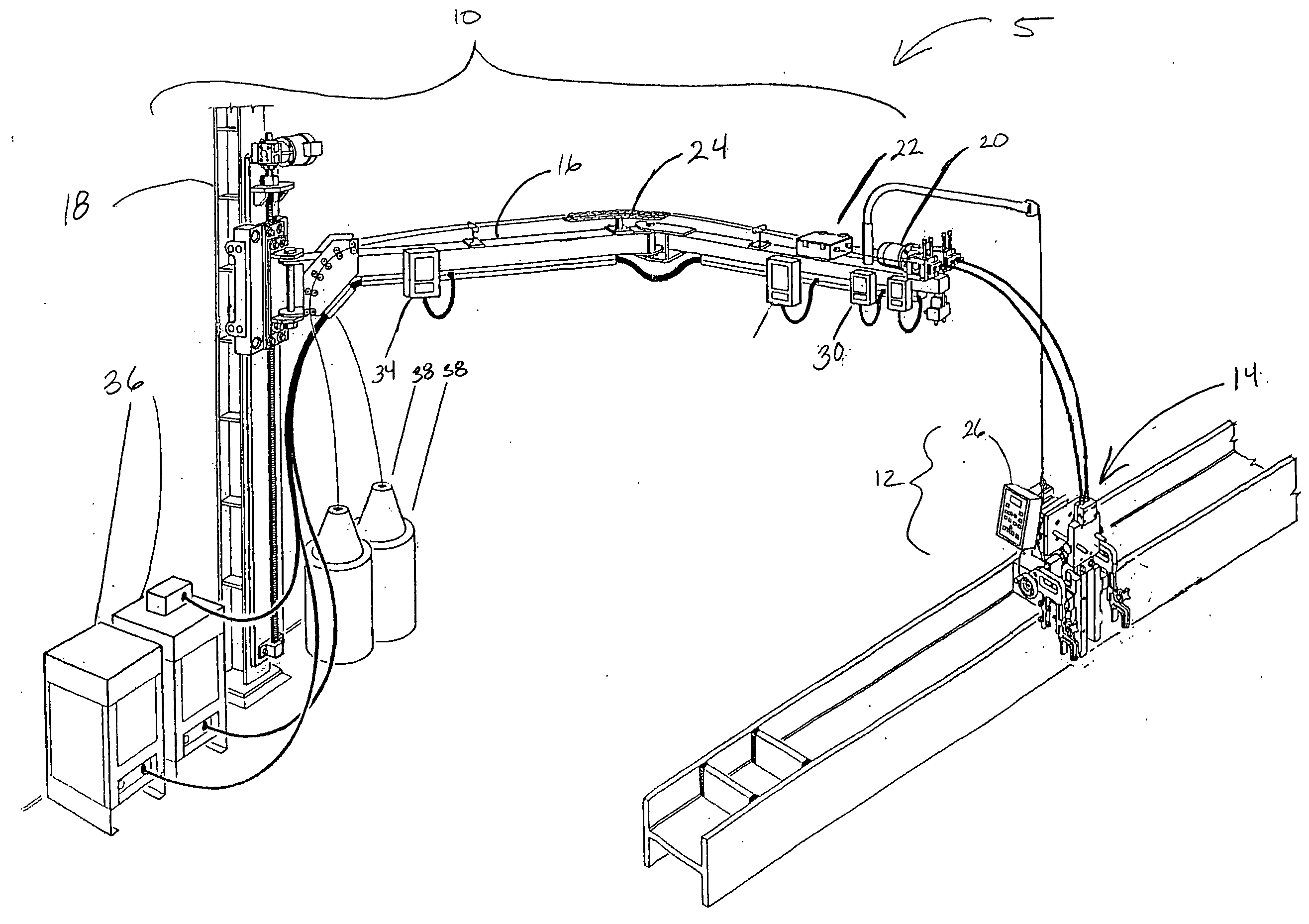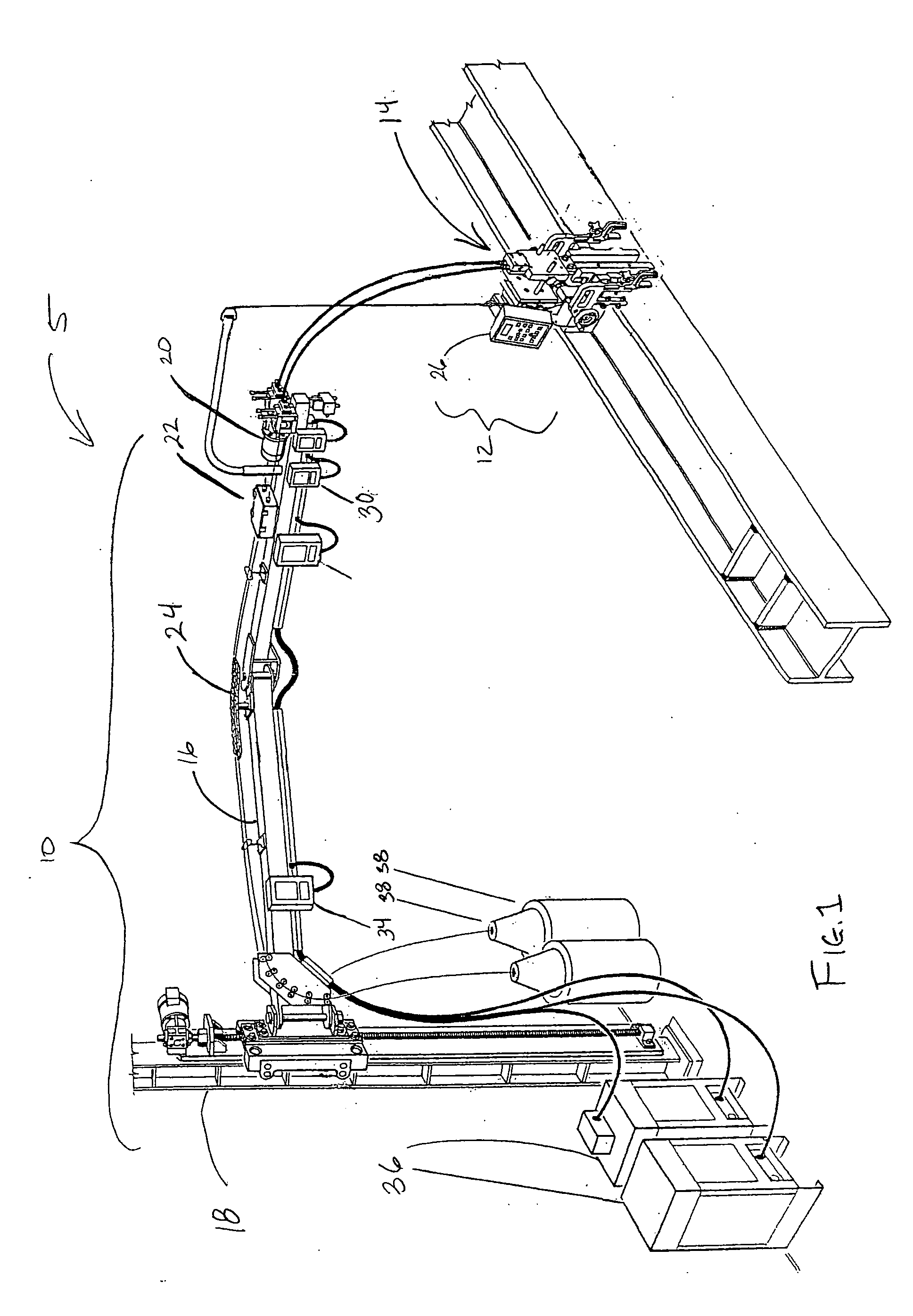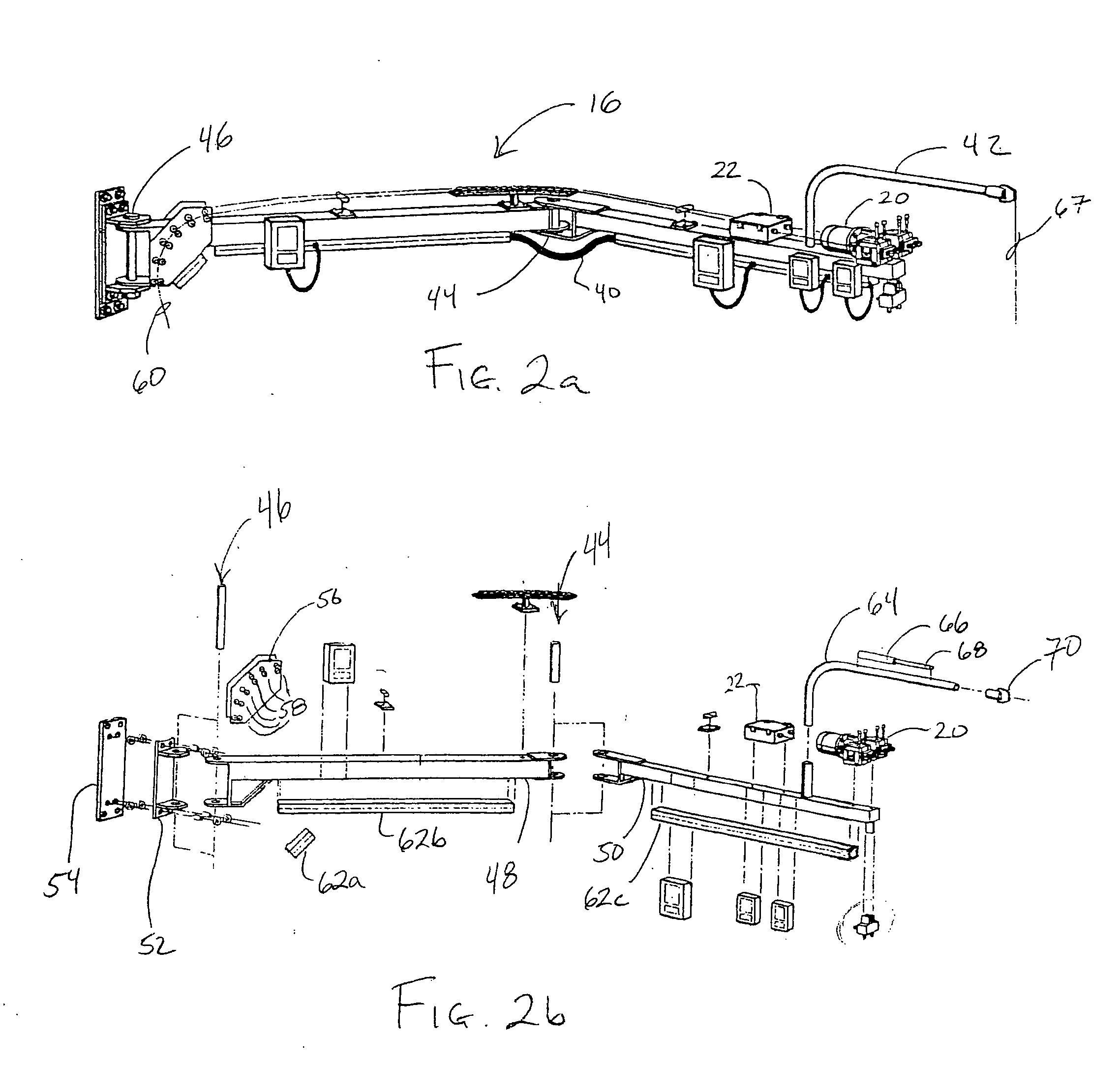Modular welding system
- Summary
- Abstract
- Description
- Claims
- Application Information
AI Technical Summary
Benefits of technology
Problems solved by technology
Method used
Image
Examples
Embodiment Construction
[0063] Referring more specifically to the drawings, for illustrative purposes the present invention is embodied in the system shown generally in FIG. 1 through FIG. 21. It will be appreciated that the system may vary as to configuration and as to details of the parts. The invention is disclosed generally in terms of heavy plate welding which may be applied to electroslag or electrogas welding. However, the invention may be used in a large variety of welding applications which employ a basic component system and a modular fixture component system, as will be readily apparent to those skilled in the art.
[0064]FIG. 1 is a perspective view of a welding system having a stiffener welding fixture. The welding system 5 includes a basic component system 10 and a modular fixture component system 12 which is a stiffener welding fixture 14. The basic component system 10 includes an articulated boom assembly 16, an articulated boom lift 18, a wire feeder 20, a motorized wire straightener 22, an...
PUM
 Login to View More
Login to View More Abstract
Description
Claims
Application Information
 Login to View More
Login to View More - R&D
- Intellectual Property
- Life Sciences
- Materials
- Tech Scout
- Unparalleled Data Quality
- Higher Quality Content
- 60% Fewer Hallucinations
Browse by: Latest US Patents, China's latest patents, Technical Efficacy Thesaurus, Application Domain, Technology Topic, Popular Technical Reports.
© 2025 PatSnap. All rights reserved.Legal|Privacy policy|Modern Slavery Act Transparency Statement|Sitemap|About US| Contact US: help@patsnap.com



